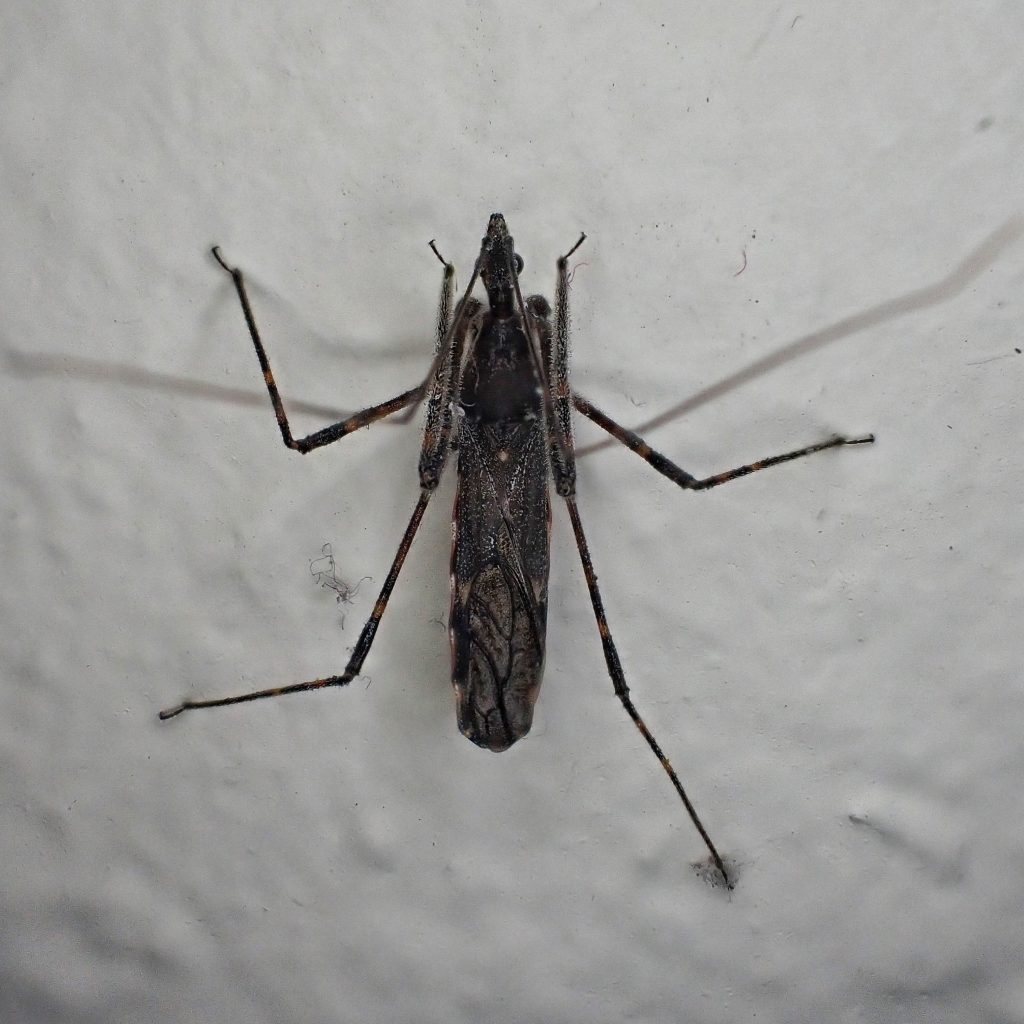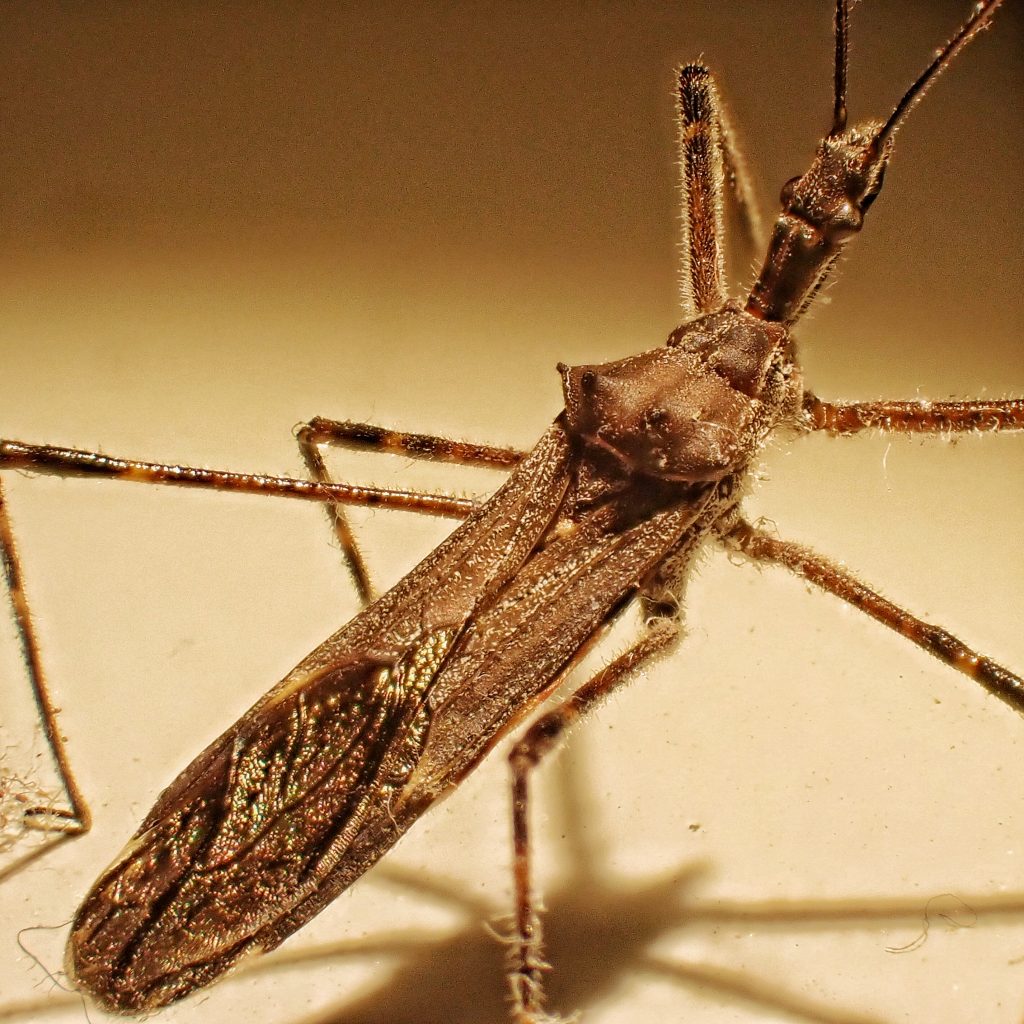
It’s really obvious how much my life has changed during my 13 years of sobriety when I say that the most exciting thing that happened last Saturday night was finding this 4-spurred assassin bug (Zelus tetracanthus) on the wall of my lab/study/bedroom. I may have even let out a very unmanly squeal of joy when I first realized that the true bug behind the door was undoubtedly a member of the family Reduviidae, and I started laughing with glee as I was photographing it, when on the monitor I spotted the four cone-like tubercles on the rear of the pronotum that give this species both its common name and specific epithet.
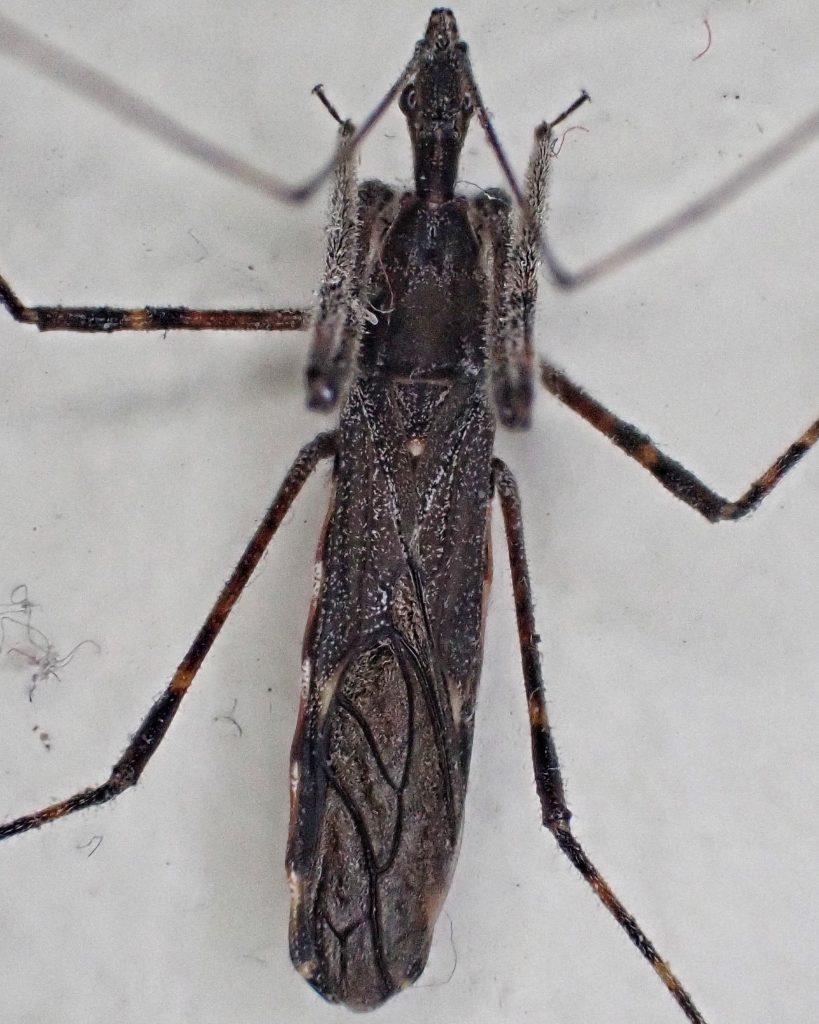
From my reading it seems that this was a somewhat unusual find, because Zelus tetracanthus is most frequently found in more wild areas, away from human habitation, and because, at least according to the data on BugGuide, outside of southern climes adults of this species are seldom encountered in the winter. It’s interesting to note that the first Zelus I ever identified was a Zelus renardii that my thoughtful (yet non-bugloving) wife Pam found and collected from the wall in our house during winter, though that one appeared in late December (2018). It was also the first specimen I ever photographed with my Olympus TG5, which had been delivered just that day.
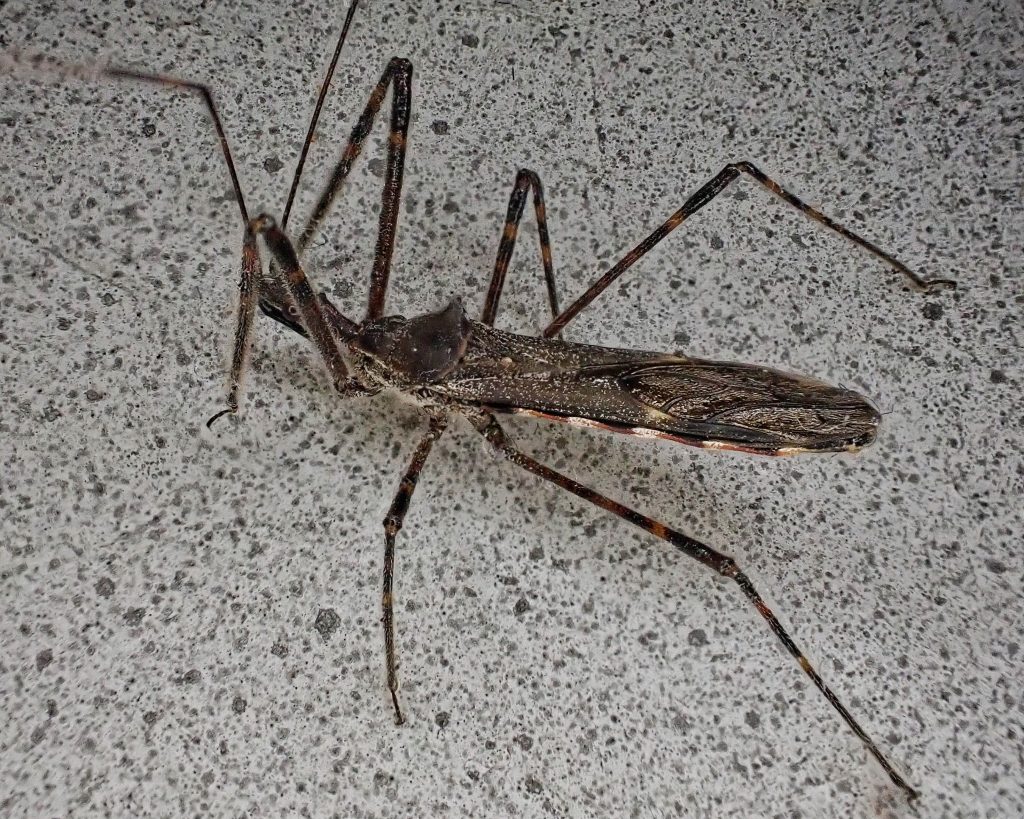
Zelus spp. are long-legged predators with a narrow body and even narrower, elongated head with an obvious ‘neck’ behind the eyes, and they feed by inserting their beak (or rostrum) into their prey, injecting digestive enzymes, and sucking out the resulting nutritious goo. They have an unusual trait to aid in capturing prey. They secrete a sticky substance from dermal glands on the front tibia, which is smeared onto nearby hairs on their femur and tibia. These densely packed setae are similar to the trichomes on the leaves of sundew plants, and Zelus are sometimes referred to as sundew assassin bugs. Not only do these sticky hairs help the bug to hold onto prey it has captured, but Zelus spp. have also been observed holding their forelegs outstretched to snag small flying insects that blunder into them.
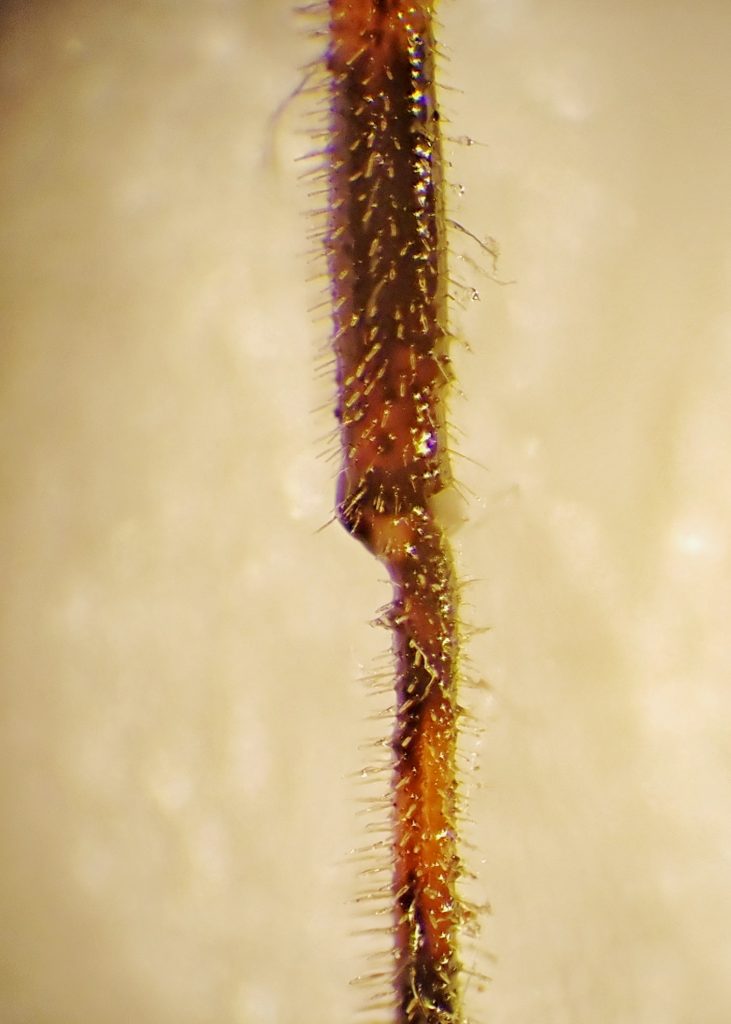
Zelus tetracanthus are found in a broader range of climatic zones than any other Zelus spp., but they are not invasive outside their native range the way that Zelus renardii are. According to Weirauch et al. (2012) this would appear to be because of a combination of factors, including longer pre-copulatory behaviors and taking longer to feed on captured prey (both of which increase exposure of Z. tetracanthus to predators), as well as a lower percentage of viable eggs per clutch. But these characteristics only make Z. tetracanthus less able to establish a new population than Z. renardii, so the primary factor is probably that Z. renardii is much more likely to be found in association with humans, and is thus much more likely to be dispersed anthropogenically, although it could be argued that those same maladaptive traits in Z. tetracanthus are why they are not commonly found in association with human habitation and horticulture.
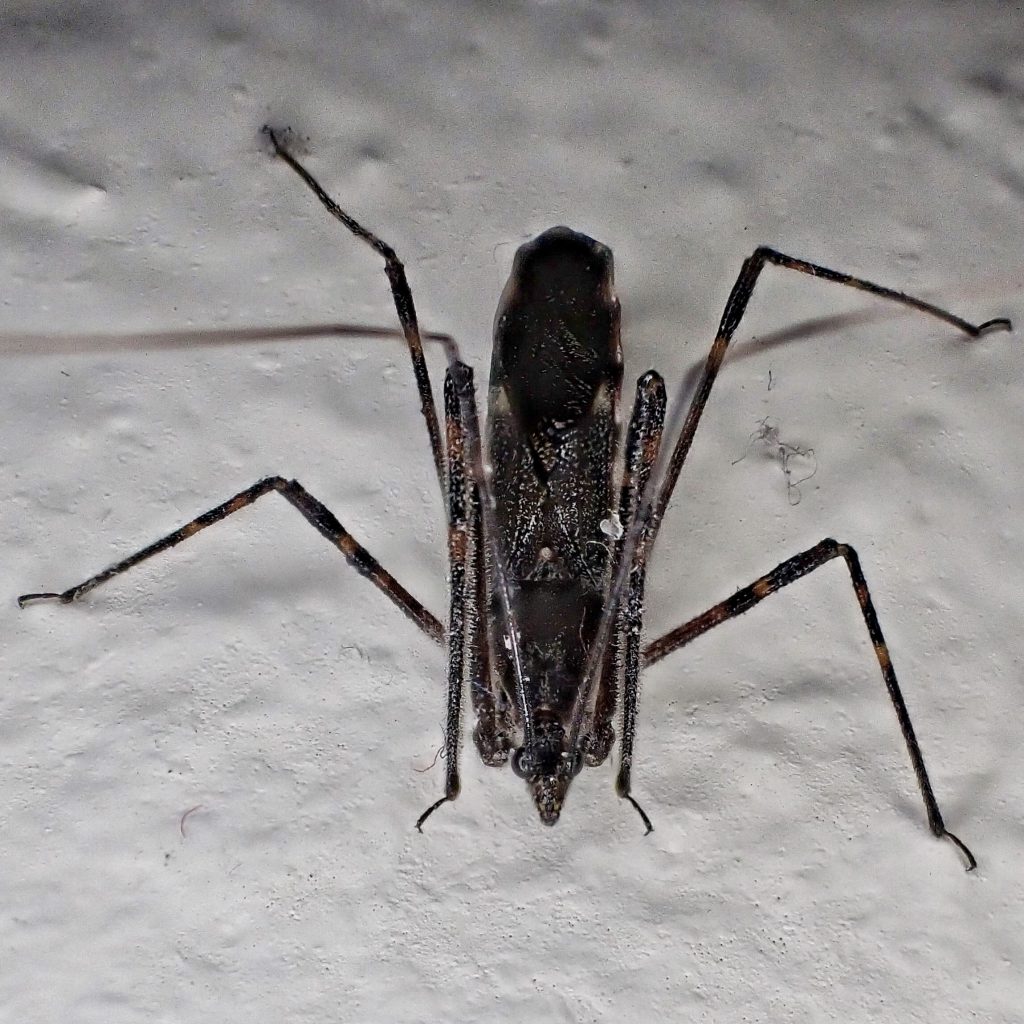
Description-Medium sized (11-18mm), narrow, brown to black and white assassin bug with two tubercles in the middle rear margin of the pronotum, in addition to the usual two at the rear corners found in most Zelus; legs are long and thin, reddish brown to black, may or may not be banded.
Similar species– Other Zelus only have two tubercles along the rear margin of the pronotum, and they are located at the corners.
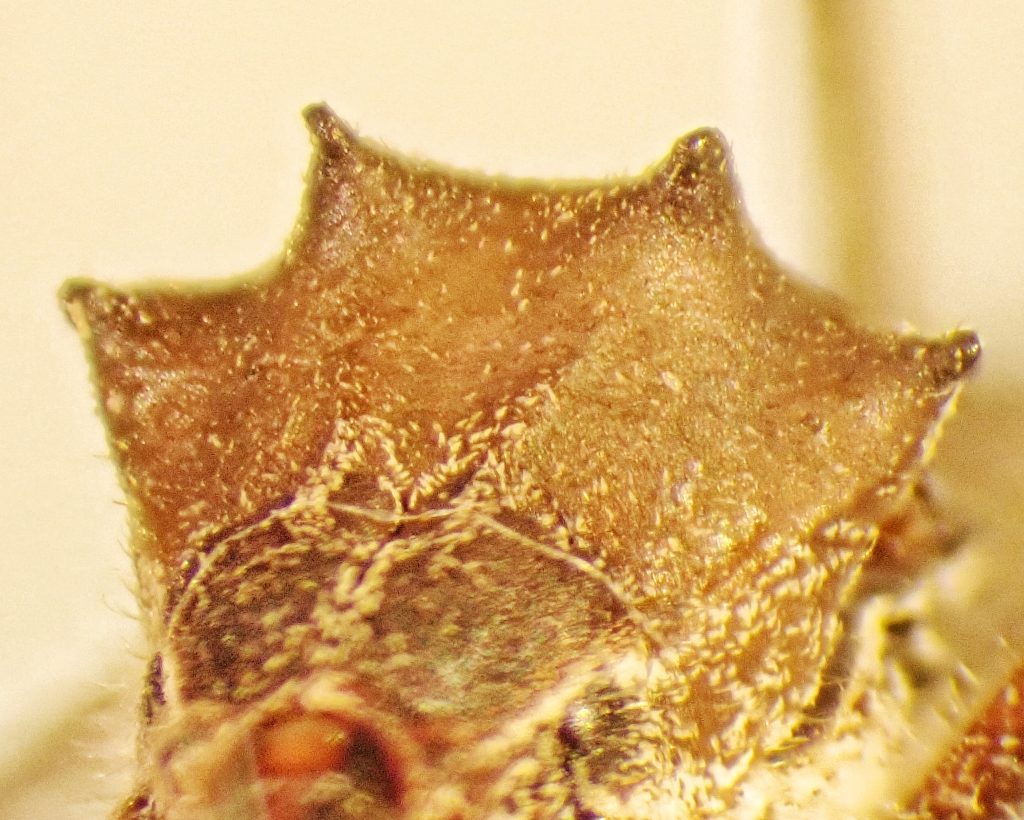
Habitat-Areas of vegetation that attract smaller arthropods, from sea level to 2500’; often found on conifers.
Range-Native; North and South America; region wide.
Eats– Larvae, nymphs, and small adults of almost any order of arthropods.
Eaten by– Probably insectivores of all classes.
Adults active-April-October
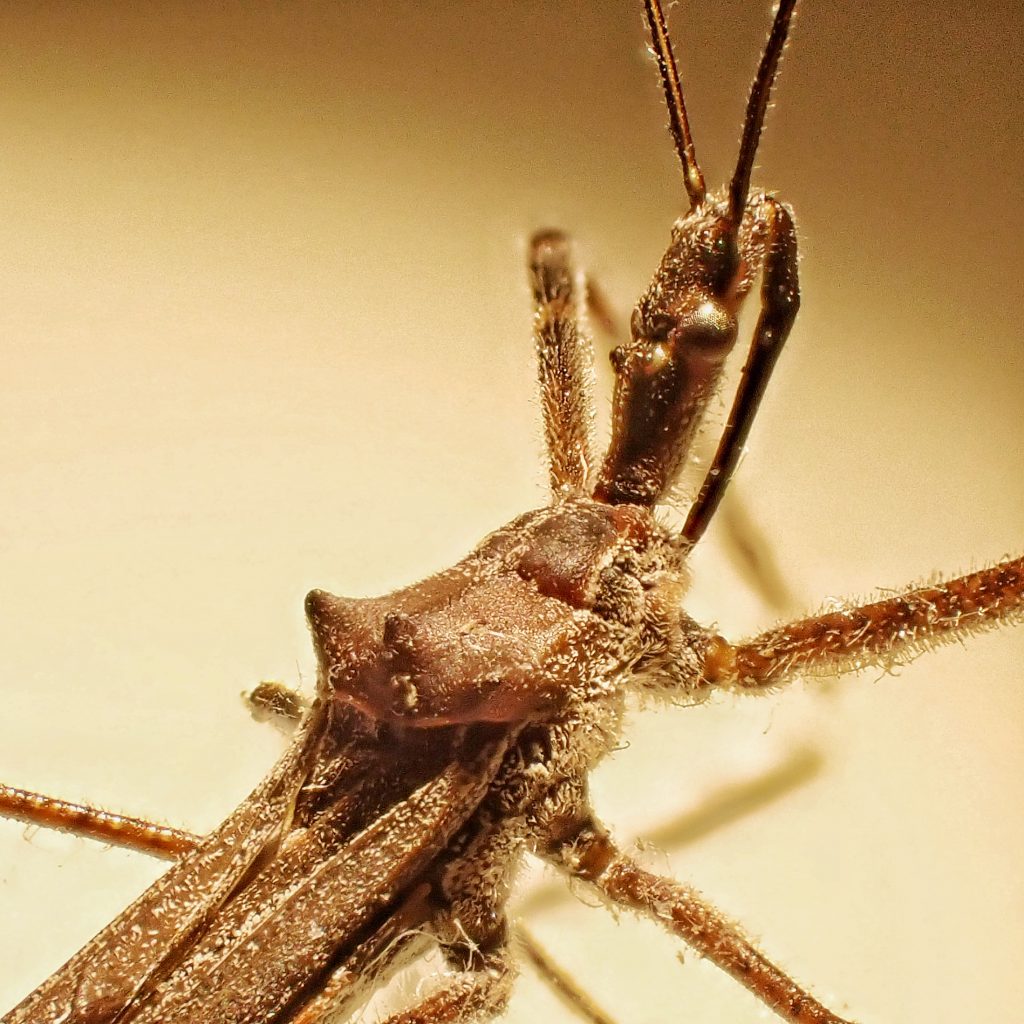
Life cycle-Eggs are glued to leaves in clutches, usually on the ventral surface, and take 8-12 days to hatch; possibly only univoltine in our region, but certainly has more than one brood in warmer climes; early instars are usually found close to their clutch, because their mother covers the eggs with sticky secretions that the nymphs use on their tibial setae, since the nymph’s tibial dermal glands aren’t functional until later instars.
Etymology of names–Zelus comes from Greek mythology, and was the name of a lesser god who represented rivalry, zeal, and anger. The specific epithet tetracanthus is from the Greek words for ‘4’ and ‘border’, and refers to the 4 prominent tubercles on the rear margin of the pronotum.
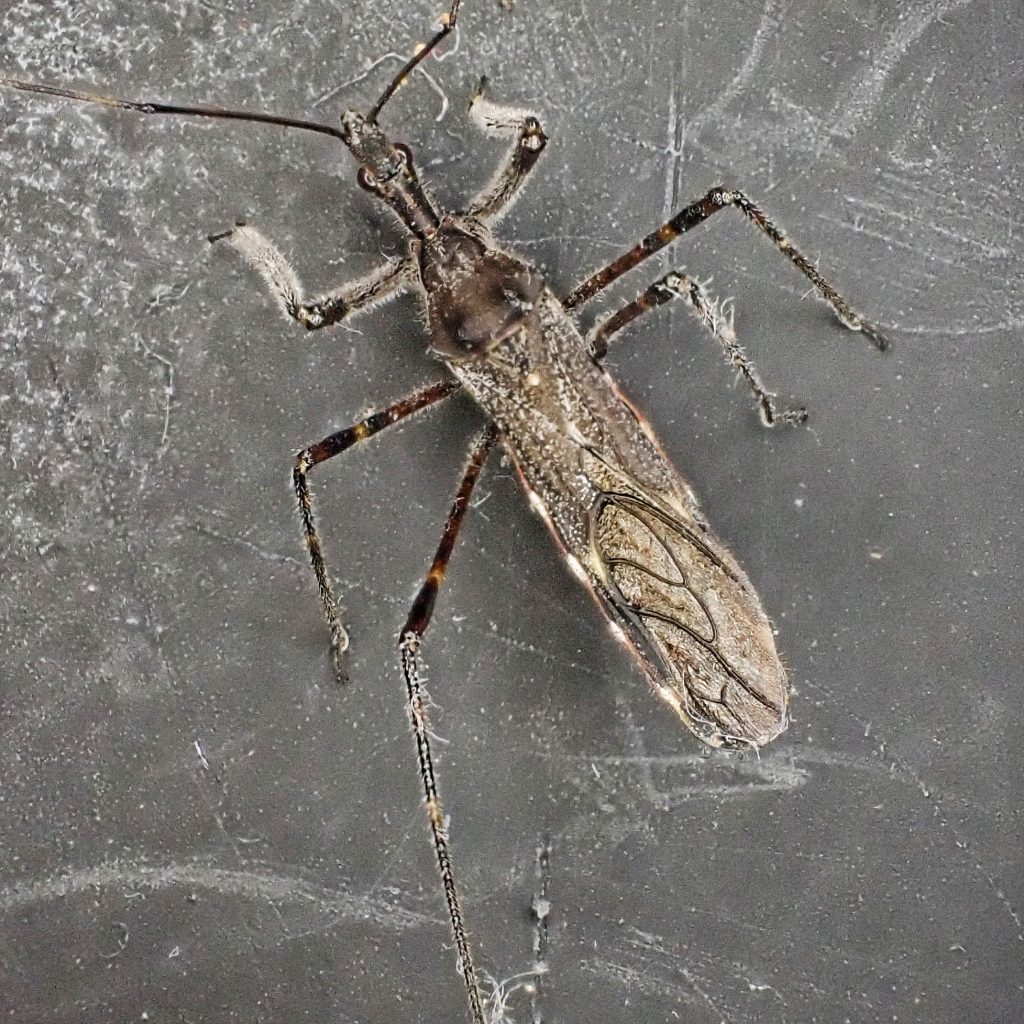
Species Zelus tetracanthus – BugGuide.Net
http://bugeric.blogspot.com/2014/09/sundew-assassin-bugs-zelus.html
Valerie’s Austin Bug Collection: Insects > Hemiptera (bugs, etc.) > Reduviidae (assassin bugs)
https://www.spokesman.com/stories/2022/sep/25/bugging-the-northwest-finally-an-assassin-you-want/
